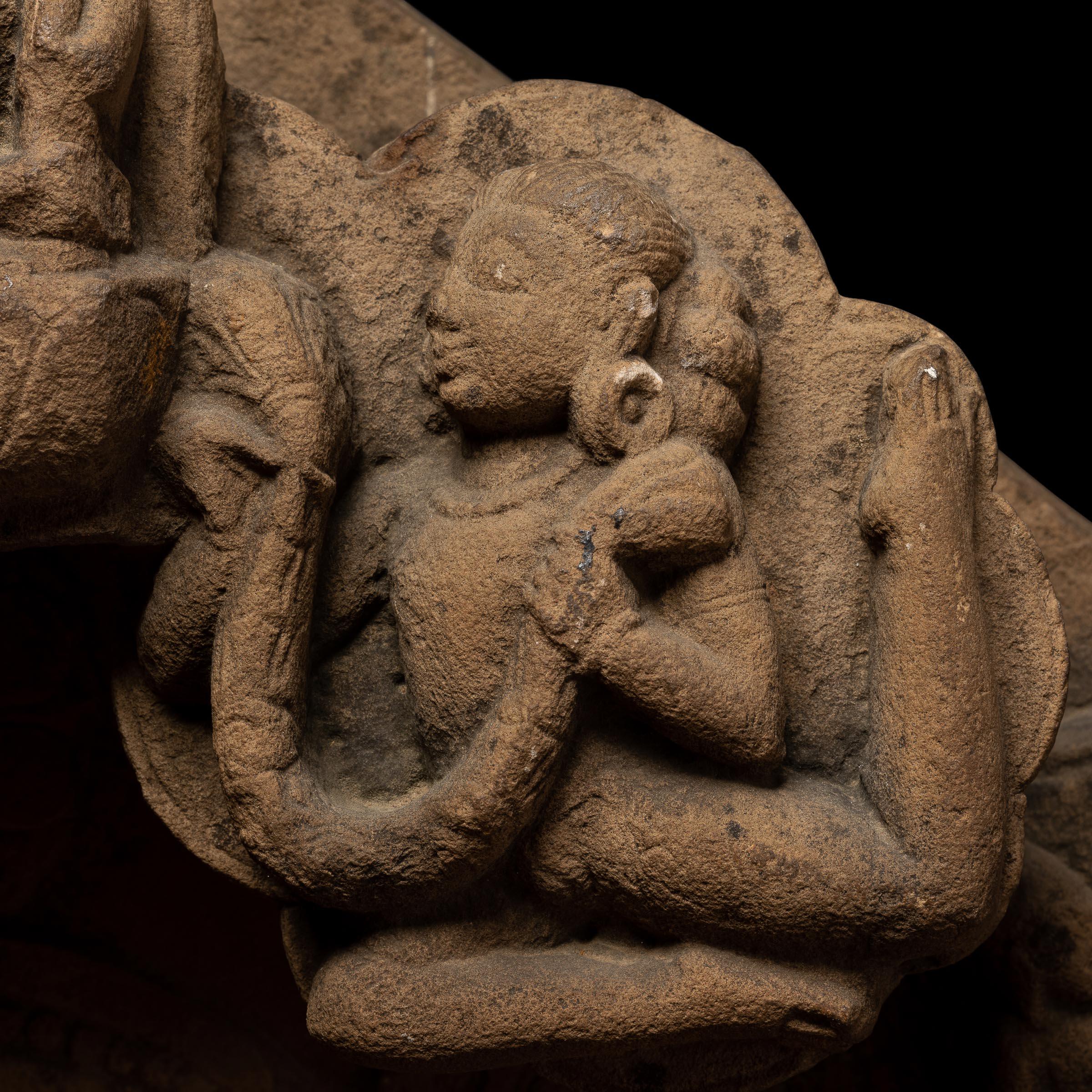


Provenance
A bu sandstone torso of Vishnu Central India, 12th Century Sandstone
40 in. (101.6 cm.) high.
R.W. Leybourne Callaghan, alias Callaghan of India, Managing Director for Roche India and Honorary Consul for Ireland in Bombay, by 1984.
Christie's New York, 20 September 2006, lot 61.
This stele torso figure depicts Vishnu, a central deity in Hindu mythology. Adorned with a Kirit Mukut (crown), Vishnu is portrayed with four arms, each holding symbolic attributes. Typically, the upper left arm carries the Chakra (discus), while the upper right arm bears a foliate (mace), symbolizing Vishnu's role as the preserver of cosmic order.
In contrast to Brahma, the creator, and Shiva, the destroyer, Vishnu's role is to maintain balance in the universe. This symbolism is echoed by the Chakra and mace, representing his duty to uphold cosmic harmony.
Surrounding Vishnu are three deities flanked by celestial beings, adding to the sculpture's aesthetic and spiritual depth. Additionally, the stele features depictions of Vishnu's avatars, or incarnations, illustrating his interventions in earthly affairs to restore balance and order.
Comparable to a stele at the Metropolitan Museum of Art in New York, this artwork likely hails from Punjab, Northern India. Together, these sculptures exemplify the regional style and iconography prevalent in Hindu religious art, offering profound insights into the mythology and cultural heritage of the region.






